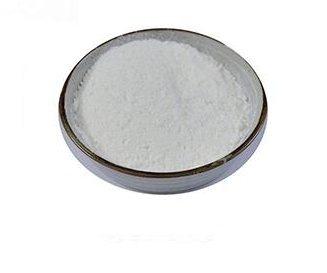Lysozyme is a glycoside hydrolase, which is composed of 129 amino acid residues, contains 18 amino acids, and has 4 disulfide bonds with a molecular weight of 14307. It mainly acts as a hydrolytic enzyme in microbial cell walls and is also known as cell wall lysase. The substrate specificity of lysozyme is very high, and lysozyme from different sources acts on different substrates. This enzyme is widely distributed in a variety of tissues and secretions of humans and animals, as well as some plants and microorganisms. It can effectively dissolve the cell wall of Gram-positive bacteria and has a significant sterilization effect on them. Lysozyme has a wide application prospect in food preservation (especially in the production of cheese and sake), medicine (such as tablets, capsules, eye drops, throat moisturizers) and scientific research.
Lysozyme is a stable protein that is able to remain relatively stable at different pH values and has a strong tolerance to heat under acidic conditions. Through biological engineering technology, adjusting the pH value and using ion exchange resin for adsorption and separation, the purified lysozyme can be obtained, and the enzyme activity is more than 18 000 u/g, which meets the medical grade standards. Lysozyme can lyse bacterial cells, especially gram positive bacteria (G+ bacteria), showing a variety of antibacterial properties. This is due to its ability to break down glycoproteins (such as mucoid proteins) and polysaccharides in the cell membrane wall, and its ability to effectively break down chitin and ethylene glycol chitin to produce products such as carbonate, hydrochloride and nitrate crystals.

According to the different sources, lysozyme can be divided into egg white lysozyme, animal lysozyme, plant lysozyme, microbial lysozyme, and phage lysozyme. According to their action on microorganisms, they can be divided into two main groups: bacterial cell wall lysozyme and fungal cell wall lysozyme. Bacterial cell wall lysozyme is further divided into two classes: those that act on the β-1,4 glycosidic bond and those that target the peptide "tail" and amide moiety. Fungal cell wall lysozyme includes lysozyme specific for yeast and mold cell walls.
Discover the History
In 1922, British scientist Fleming found a substance called lysozyme in the nasal secretions of the human body, which can resist the invasion of microorganisms. However, with the discovery of antibiotics, lysozyme gradually fell out of favor and was almost forgotten. It was not until the mid-1980s that Japan, Canada, and the United States began to re-recognize the importance of lysozyme and apply it to medicine. The mechanism of action of lysozyme is different from that of antibiotics in that it kills bacteria by directly dissolving their cell walls and therefore does not lead to resistance. In addition, lysozyme is widely present in the human body itself, among which the content in tears is the highest, which is suitable for the physiological characteristics of the human body.
Introduction
Lysozyme is obtained by bioengineering techniques, which include regulating the pH value of the protein and adsorbing separation using ion-exchange resins. With a molecular weight of 14307, it is a glycoside hydrolase that can effectively solubilize the cell wall of Gram-positive bacteria and has a strong bactericidal ability. In addition, lysozyme can be used in crystalline preparations to help prevent food spoilage, and is widely used in food preservation (especially in the production of cheese and sake), pharmaceuticals (such as tablets, capsules, eye drops and throat lotions), daily chemical products (such as toothpaste and cosmetics), baby foods (such as breast milk powder), and scientific research.
Purpose
Lysozyme can effectively inhibit Gram-positive bacteria and negative bacteria, and has significant antibacterial effect. This product has no effect on yeast, can be used for yeast recovery and expansion culture in beer production, and can be used at the beginning of fermentation to prevent bacterial contamination.
Post time: 2025-07-16
